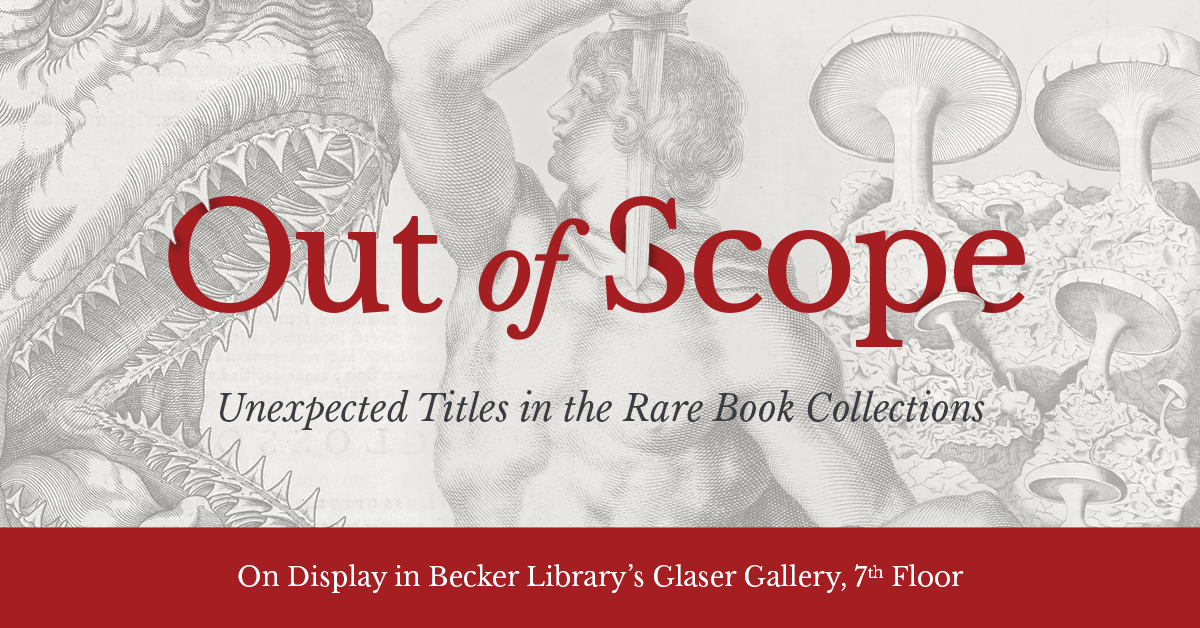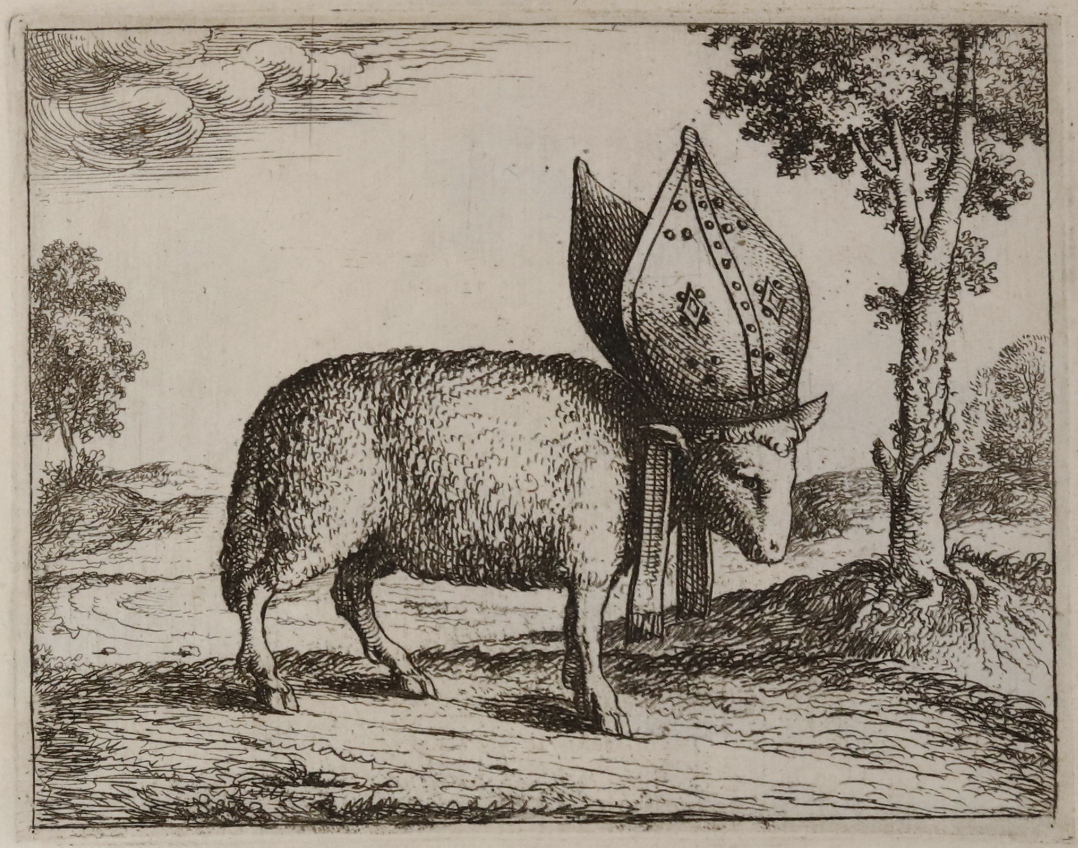Rare book collections usually coalesce around a unifying theme and it’s no surprise that most of the rare books in the Becker collections focus on anatomy and pathology. And yet, a quick browse of the Becker Library catalogue will reveal several titles that seem like they don’t quite fit. This exhibit highlights those works that appear “out of scope” and tells the story of why they nonetheless have a place on these shelves.
The exhibit is now on display at Becker Library's Glaser Gallery on the 7th floor through June 15, 2022.

About the exhibit
Physicians of the early modern period were interested in learning about a variety of other scientific subjects. To earn a higher degree in medicine, they would have already studied the Seven Liberal Arts: Grammar, Rhetoric, Logic, Arithmetic, Astronomy, Geometry, and Music. Furthermore, many theories that formed the basis of early modern medicine originated in classical philosophy and natural history.

Given this close connection between medicine and what is today considered the natural sciences, it’s not a surprise that many physicians published on a wide variety of subjects. These texts shed light on the intellectual world of the early modern period, providing context for the milieu in which physicians studied, practiced and published.
The links between art and anatomy are most apparent in the fields of drawing and painting. Anatomists often hired trained artists to provide the illustrations for their works. In turn, artists studied anatomy to enhance their portrayals of the human form. But the visual arts weren’t the only discipline that intersected with medicine. Physicians and other men who were interested in medicine also tried their hands at fiction and poetry, played musical instruments, and even wrote treatises on musical theory.

Likewise, while 21st-century medical practices aim to remain separate from religion, this was not always the case. Religion and medicine were closely intertwined throughout the ancient, medieval and early modern periods.

In pre-modern Europe, God was seen as the ultimate source of both health and illness. Outbreaks of plague were often attributed to divine displeasure. Remedies that that utilized religious talismans and prayers frequently appeared in medical texts. Physicians also considered the liturgical calendar when prescribing treatments such as bloodletting. And, because the stars could also influence medical procedures, physicians were expected to have a working knowledge of astrology.
In addition to works related to the fine arts and religion, Becker’s collections hold works that pertain broadly to European history and culture. Some of these, such as the encyclopedias of biography, have a clear connection to medical history, even if medicine is not their primary focus.

As these works—and this entire exhibit—show, book collecting can quickly spiral in unexpected directions, resulting in collections that contain titles with no obvious theme to relate them to each other. But if we delve deeper into these items, we find out that they reflect the interdisciplinary nature of medical history, which touches everything from religion to classics to the fine arts.
